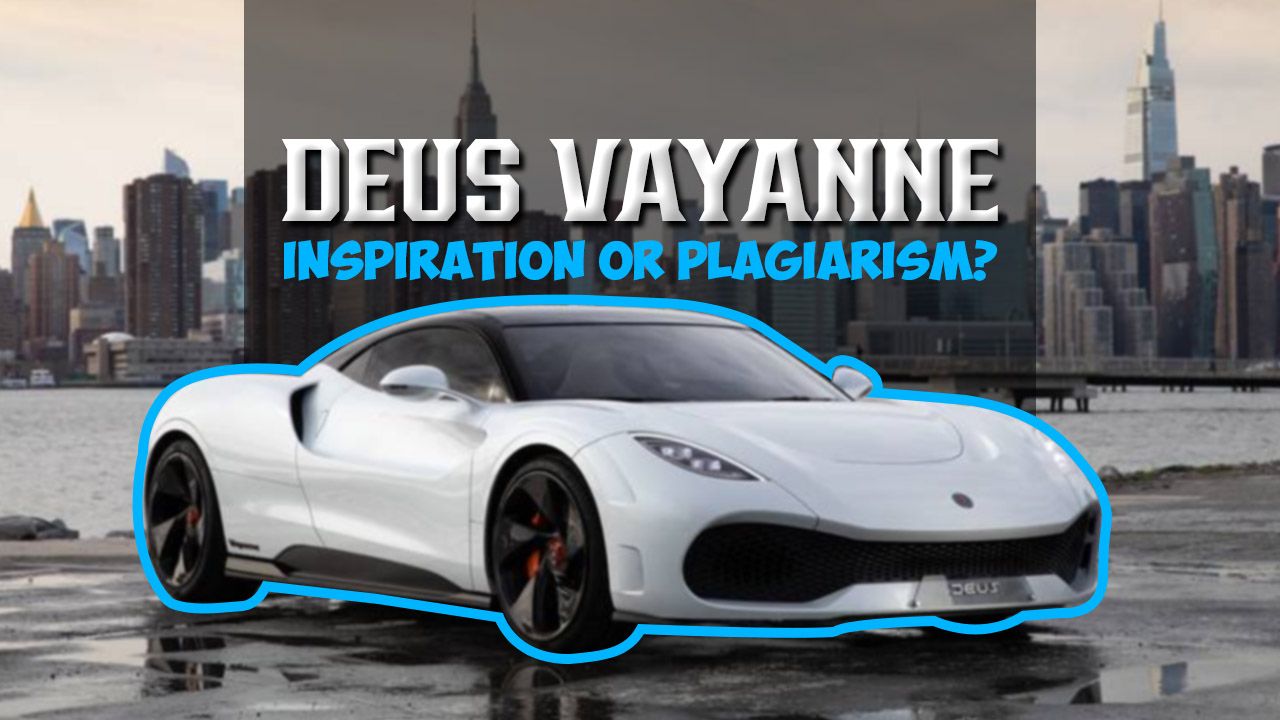The Deus Vayanne was introduced at the 2022 New York Auto Show, with a limited production run of 99 units, scheduled to commence in 2025. The first Austrian car in a long time will come with 2,200 horsepower, making it the most powerful EV, yet. Its design was executed by Italdesign and to no surprise, it is gorgeous. However, automotive design has become somewhat repetitive and the Vayanne features numerous design cues, we recognize from other existing supercars. Here are all the design elements that the Deus Vayanne has “plagiarized” from other models.
Headlights: Koenigsegg Agera
|
|
ids=1074468,1074469 |
no_overlay=false |
before_label=Deus Vayanne |
after_label=Koenigsegg Agera> |
We are not suggesting that the Austrian carmaker has intentionally copied the design, but there is, definitely, a resemblance. One of them is in the headlight pieces, which although seem narrower than those of the Swedish hypercar, seem to be mimicking the design, especially in the way they are positioned between the front bumper and hood. The LED “eyebrow” strip also seems to be very similar to the design of the Agera.
Rear-end design: Lotus Evija
|
|
ids=1074470,1074471 |
no_overlay=false |
before_label=Deus Vayanne |
after_label=Lotus Evija> |
Although it features less in the way of creases and curves, the Vanyanne’s rear end resembles that of another performance EV – the Lotus Evija. The LED taillights on both vehicles follow a very similar pattern, with the main difference being that the Vayanne features an uninterrupted pattern whereas the Evija features two separate bodies. The Vayanne’s rear features a grill, not present on the Evija. Instead, the British model features enormous flying buttresses, which is one of the few more noticeable differences.
Side profile (rear section): Pagani Huayra
|
|
ids=1074472,1074473 |
no_overlay=false |
before_label=Deus Vayanne |
after_label=Pagani Huayra> |
The rear quarter-panel of the Deus Vayanne features a large clear surface, similar to that of the Pagani Huayra. The main difference here is the surface of the quarter panel, which in the case of the Huayra, seems to be roughly 30-percent bigger. Another similarity, found in this section of both cars is the air intake, which is positioned on the beltline of both cars, just behind the door.
Canopy: McLaren GT
|
|
ids=1074479,1074480 |
no_overlay=false |
before_label=Deus Vayanne |
after_label=McLaren GT> |
The Vayanne is advertised as a practical, EV supercar, with usable cargo space. Don’t expect to haul furniture in it, though. While the “tailgate” opening seems to be much larger than on the McLaren GT, which only includes the rear glass section, the overall design of the canopy on both cars is strikingly similar. This is especially true once you look from a rear, three-quarter perspective. While there are only so many ways you can style the canopy of a mid-ship car, the design of these two is very similar, with very little setting them apart.
Lower front fascia: Ferrari F430
|
|
ids=1074481,1074482 |
no_overlay=false |
before_label=Deus Vayanne |
after_label=Ferrari F430> |
The Vayanne’s front “grill” features a single-piece design, very similar to that of the boutique German sports car – Artega GT. On the other hand, the outer sections of the “grille” are well-rounded and feature a similar design to the separate openings, found on the Ferrari F430, more specifically, the regular one and not the 430 Scuderia, which features a slightly more angular grill design.
Shift knob: BMW 8 Series
|
|
ids=1074483,1074484 |
no_overlay=false |
before_label=Deus Vayanne |
after_label=BMW 8 Series> |
While the interior of the Deus Vayanne seems to be a nice blend between performance and luxury, we cannot help but notice the design of the “gear” shifter. Its clear design is very similar to that of the BMW 8 Series and there’s a button on the exact same spot where you would find the “P” button in the Bavarian model.
Dash-mounted clock: any Porsche with the Sport Chrono package
|
|
ids=1074485,1074486 |
no_overlay=false |
before_label=Deus Vayanne |
after_label=Porsche Panamera> |
The interior of the Deus Vayanne is both futuristic and old-school. One neat feature inside the Austrian performance EV is the center-mounted “analog” clock, on the dash. It, actually, looks like a digital piece, made to resemble old-school watches. We see a similar design on any Porsche that has the Sport Chrono package. Other luxury cars also feature similar, dash-mounted clocks, but the overall design and location are very reminiscent of Porsche’s Sport Chrono option.

